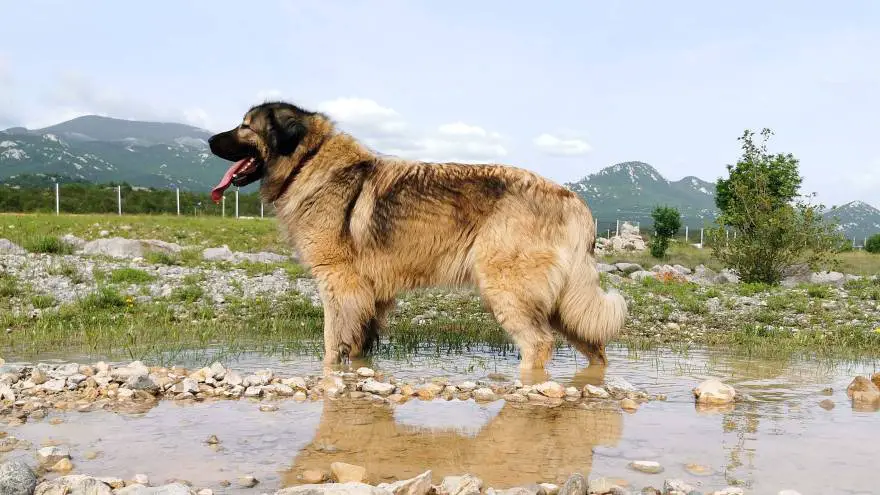
Yugoslavian Shepherd Dog - Sharplanina
The Yugoslavian Shepherd Dog or Sharplanina is a large livestock guardian dog breed that is considered as one of the first Molosser dog breeds in the world. More precise, it is a Molloser-type mountain dog breed originating in the Balkan Peninsula in the territory of modern-day Kosovo, Serbia, and northern parts of Macedonia.
This breed was named after a Mountain called Šar (Shar) and it’s original Serbian name is “Šarplaninac” (Шарпланинац) or “Šarplaninec” (Шарпланинец) in Macedonian. The first name this breed was given was the Illyrian Shepherd Dog and it wasn’t until 1980 when the FCI finally changed the breeds name to the Yugoslavian Shepherd Dog.
FUN FACT: Due to their intelligence these dogs were used as military dogs in the former country of Yugoslavia
The average price of the Sarplanina puppy is between $1.500-$2.000. The price will depend on their pedigree and breeding lines. Some show-quality dogs might cost more.
Yes, Sarplanina dogs are medium-to-heavy shedders. They have thick, medium-long coats that will require some brushing.

Height:
22,8-24,5 in (58-62 cm)

Weight:
66-99 Ib (30-45 kg)

Origin:
North Macedonia, Serbia

Life Expectancy:
11-13 years
Breed History
The Sharplanina is truly an ancient dog breed. It is believed by many canine historians to be one of the oldest Molloser-type dogs in history. This breed is closely related to other breeds that are native to these lands as well as Turkish, Asian and Caucasian sheepdogs. This is the area where the ancient Molossian Kingdom started and where Molossians bred their first guard dogs. They took those dogs with them all across the globe thousands of years ago on all of their conquests. Everywhere the ancient Molossians went, their dogs followed. They used them for guarding, fighting, war, and shepherd duties. There is evidence proving that these primitive Sharplanina Dogs influenced modern mastiff and shepherding dog breeds and that leads us to the conclusion that these dogs are really one of the oldest breeds in the world.
As we already said, this breed was named after a famous Macedonian mountain and their name is a bit misleading. They could be found all over the mountainous region of Macedonia and surrounding regions of the old.
There is a popular theory that says that this was the breed that served as the palace and war dogs of Alexander the Great.
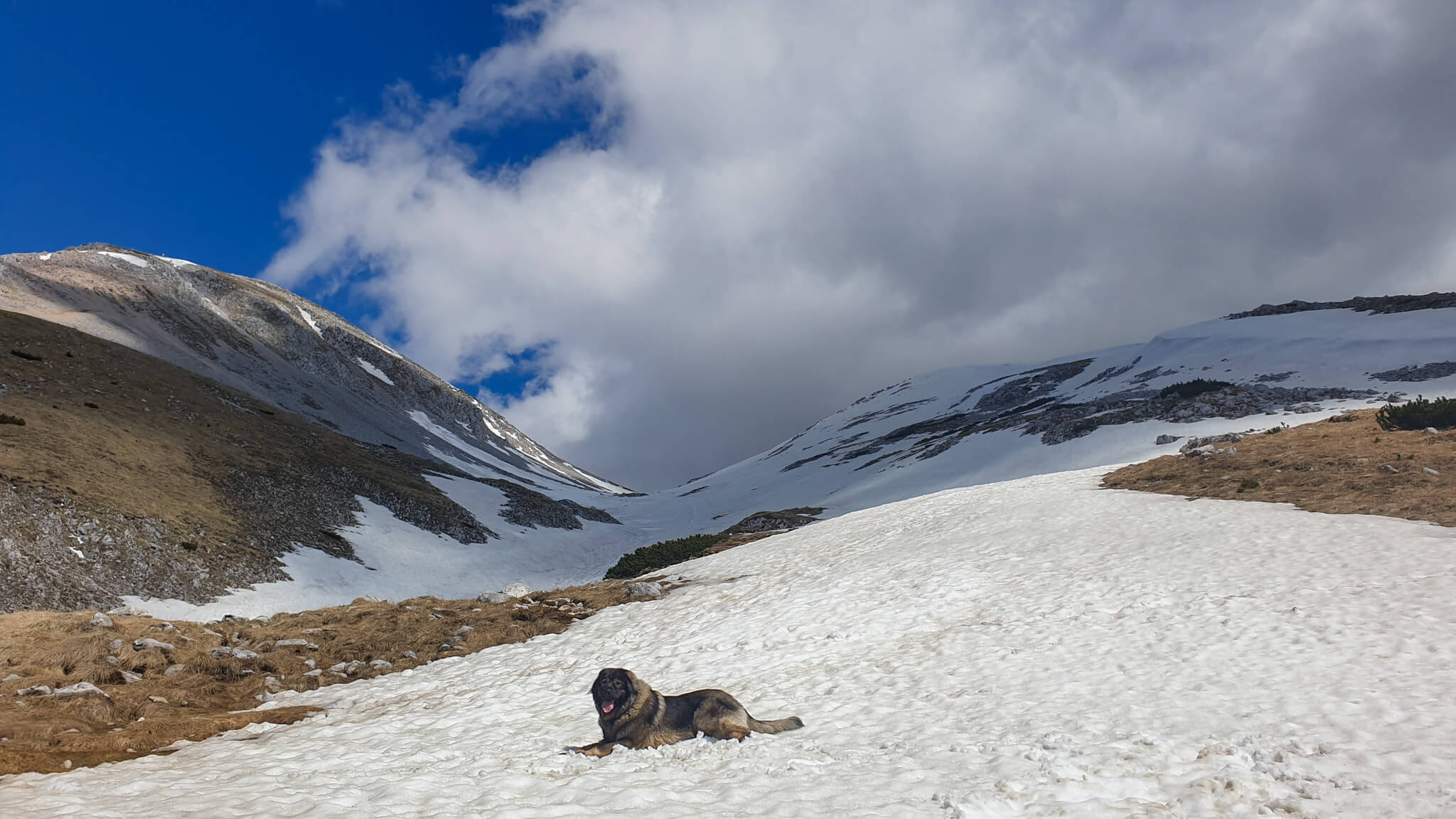
Before the rise of the Turkish Empire and their famous conquests, all of the Balkan shepherd dog breeds were called “Illyrian Mountain Dogs” and they were thought of as being regional Molossian dogs rather than being separated as unique breeds. That was also a bit misleading as the native people of the different tribes in Balkans didn’t mix their dog breeds and had strict separations between them. All of these breeds most likely have the same ancestors - ancient dogs from the Armenian and Caucasian territories. The biggest difference is that Sharplanina Dogs were bred without the influence of other breeds a lot longer than other dog breeds from that area.
It wasn’t until the end of the 1930s when this breed finally became recognized and registered by their first name the “Illyrian Sheepdog” and at that time, these dogs had to share its name with its smaller northern cousin originating in Slovenia. It was of course the Karst Shepherd. In 1954 these two dog breeds were finally separated and registered under different names and the Sharplanina Dogs became known as the Yugoslavian Shepherd Dog. They were registered by the United Kingdom Kennel Club in 1995. and soon after started being exported to the United States of America and Canada where it is still valued and praised as a great guardian of estate and livestock.
Dog Breed Characteristics
The Sharplanina dog breed is robust, well-proportioned with strong bones, and impressive size. They have a thick, long, fairly coarse double coat that used to protect them from the extreme weather of their native region. They should have a good and reliable temperament with very protective characteristics. These dogs are very loyal and devoted to their owners. This is an old dog breed and has been registered in most of the major cynology associations. However, one of the biggest associations in the world, the American Kennel Club (AKC) has not yet recognized or registered this breed, not even in their Foundation Stock Services as a breed that is waiting on full recognition.
FUN FACT: The Sharplanina dogs are still regarded as being one of the best livestock guardian dog breeds and their popularity is on the rise in the USA and Canada
This breed is registered by the FCI and they have a standard for this breed.
FCI standard
The FCI or the Fédération Cynologique Internationale is the governing cynology body for its 98 member states across the globe. It is a union of national cynology associations that should be in charge of all major purebred dog-related issues and lobbying.
The FCI standard describes these dogs as being sturdy and strong. They should be powerful and fearless as well as very devoted to their owner and flock they should be guarding. These dogs were placed in Group 2 (Pinscher and Schnauzer - Molossoid breeds - Swiss Mountain and Cattle Dogs), Section 2.2 (Molossoid breeds, Mountain type). Even though these dogs are a working breed and have been performing shepherding and protective duties for centuries, the FCI does not require these dogs to have a working trial. This standard has put in place the required measurements for these dogs and the male Sharplanina Dogs should have an average size of 62 cm (24,5 in) and females should be on average 58 cm (22,8 in) tall. Their weight should be proportioned to their size and it should be between 35 - 45 kg (77-99 lb) for the males and 30 - 40 kg (66-88 lb) for the females.
This breed was fully recognized by the FCI on the 24th of July 1957.
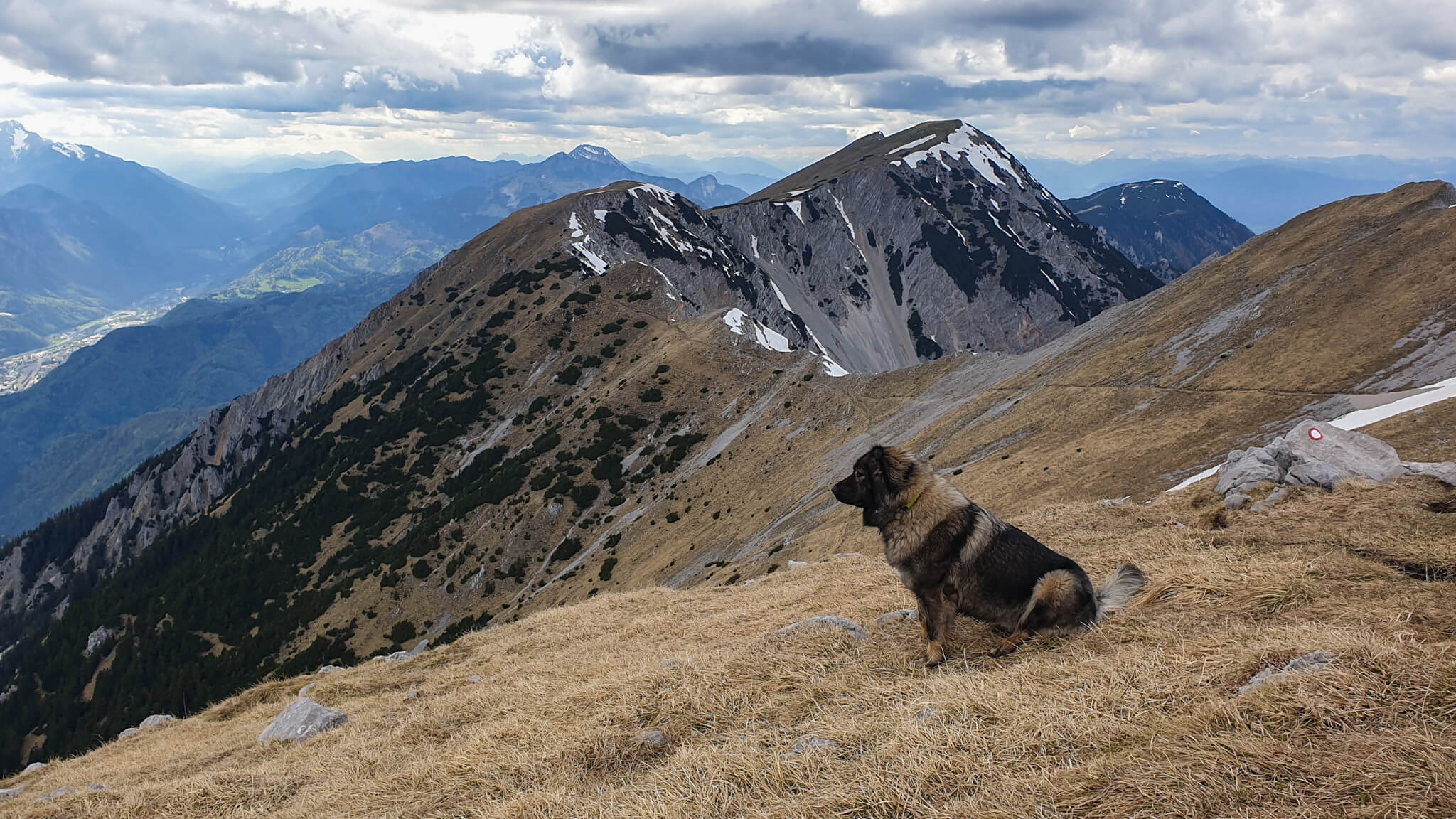
Temperament
The Yugoslavian Shepherd Dog, as its name clearly suggests, is a working breed that had many purposes throughout history. Their ancestors were Greek guardians and war dogs and they have inherited strong protective behavior. They were selectively bred to pass down some of their characteristics and the biggest focus was on their ability to protect the livestock they were entrusted with.
They are generally very independent because they had to work independently around the livestock. However, they also develop a strong bond with their owner and once that bond has developed, they will do anything to protect them. The Sharplanina dogs are naturally careful and distrustful towards strangers and that is one of the things that makes them so good at guarding duties. They are the happiest when they have a job to do and generally prefer the company of their flock over the company of other dogs or even humans.
Because of their independence, they can be challenging to keep as pets. They have a strong will and prefer their own logic over the commands they are given by their owners.
FUN FACT: This breed is forbidden in Denmark along 12 other breeds, even though the Sharplanina has no recorded incidents
The Sharplanina dogs are can think of their family as “their” flock and will sometimes try and herd people as they would herd sheep or goats.
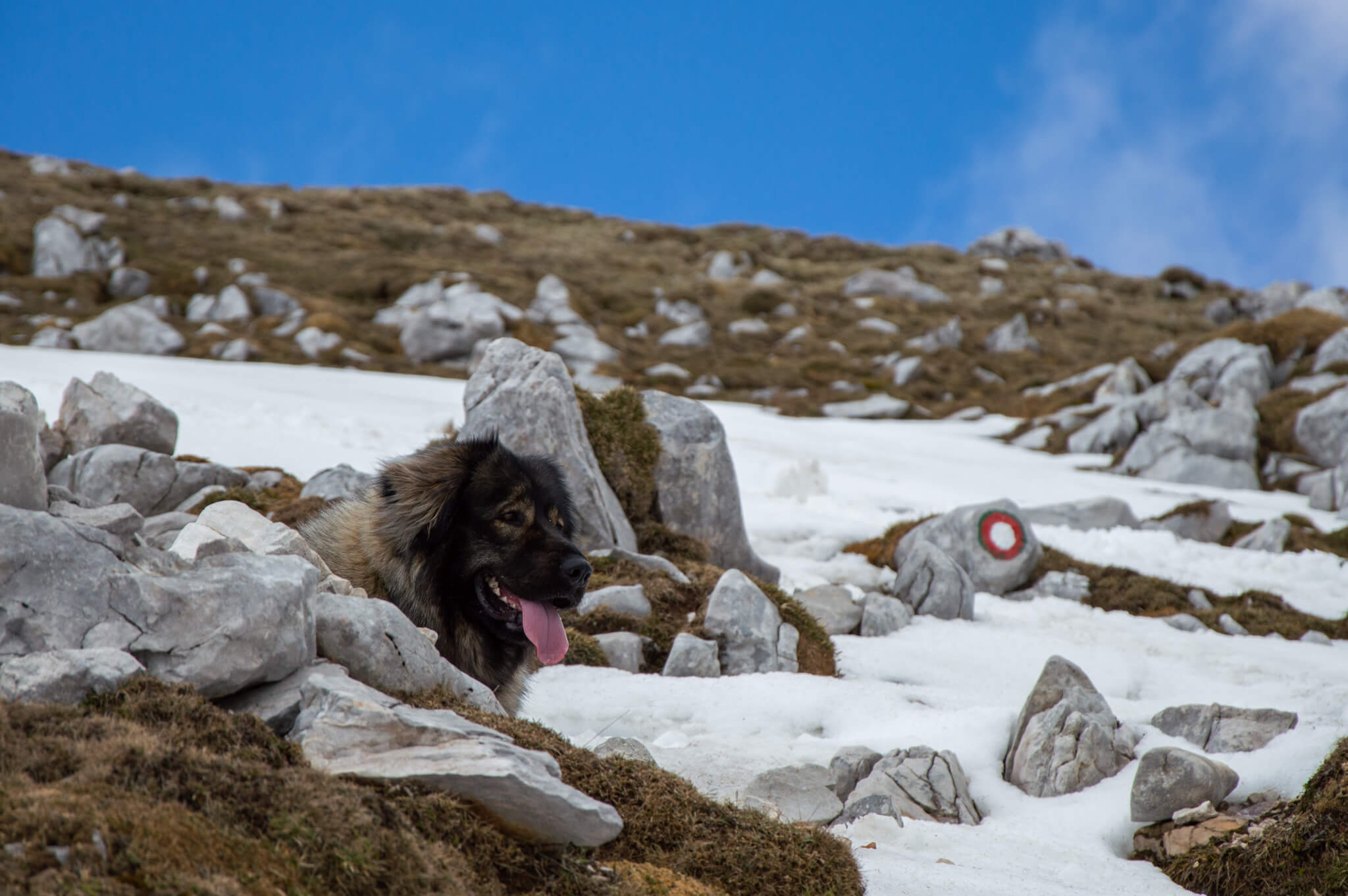
Grooming and coat
This is an outdoor mountain dog breed and their coat reflects their historic development. They have a thick, dense coat that had to protect them from outside conditions in the area they have developed and worked in. They have a softer, protective undercoat that they blow twice a year during the shedding season. It isn’t a big problem if they are outside and working, but if they are living inside your household you will need to control it or the mess they leave will be huge. Try brushing these dogs at least once or twice a week to keep their coat healthy and beautiful. During the shedding season you should brush them on a daily basis to help them get rid of dead hair and prevent tangles and mats. You should bathe them every two months.
The Sharplanina has defined colors in the standard and any deviation is considered faulty. These colors include every shade from white to dark brown that looks nearly black. They are what cynologists call solid-colored dogs. The most preferred color shade is greenish-grey (iron grey) and dark grey.
These dogs will most likely wear their nails naturally if they are living outdoors but if they are living indoors you should trim them when they get too long. You should brush their teeth at least three times a week to prevent tartar buildup and gum problems.
Yugoslavian Shepherd Dog training
Training such an independent breed can be extremely challenging. If they are kept as working dogs on farms or estates, most of the time their instinct tells them how to act and what to do when they are on guarding duty. They have a great work ethic and know exactly how to react in most situations.
If you are interested in keeping this breed in an apartment or a house, we would like to say that it is not the absolutely best option. They were bred to live on large farms and have a flock to take care of and typically don’t do so well in apartments.
If you decide to take them in an apartment regardless, it is necessary that they are properly trained. Training them can be challenging as they have a strong will and are independent thinkers. They do not like long training sessions and you need to keep them entertained so they don’t get bored with repetition. To achieve the best results with your dog use positive reinforcement as a training method and include a lot of praises and treats. They do not respond too well to harsh training methods and fear. If these negative methods are used they can become shy, aggressive, and develop many behavioral problems.
When training a Sharplanina you have to be firm and consistent and you should let your dog know who is the alpha. If you do not earn the respect of this breed it will be nearly impossible to train them. These dogs are not recommended for first-time owners.
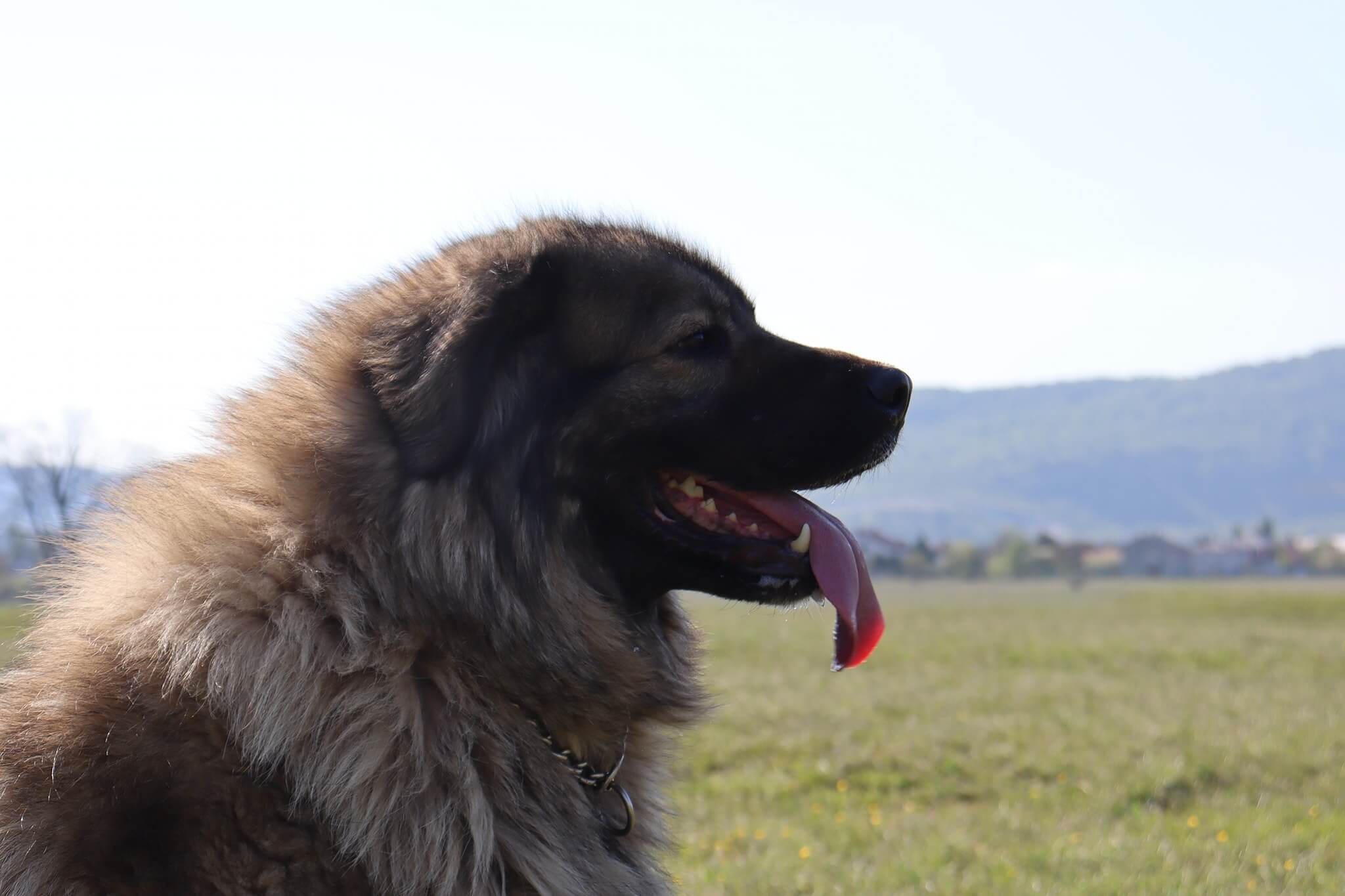
Socialization
Socialization is a big part of every dog’s life and this breed is no different. In fact, these dogs might need more socializing if they are kept as pets and not as working dogs. The process of socialization should start as soon as your dog arrives home. Try to expose your dog to many different sights, sounds, situations, puppies, older dogs, and people while they are still young.
It is, of course, important that your dog gets all the necessary shots first.
Exposing them to new situations while they are still young will teach them how to properly react. If your dog isn’t properly socialized it can make your life very difficult. It will become impossible to have guests over and dog parks will be off-limits.
Sharplanina and children
These dogs can be great with children of their family and your child will have a great protector at all times. It can be however a problem as these dogs can think of children as part of the flock and might try and herd them.
These are big dogs and they can unintentionally hurt a child by knocking them over while playing. It is not a breed that is recommended for households with children.
Children should never be left alone with the dog unsupervised.
Yugoslavian Shepherd Dog and other pets
This breed can learn to get along with other pets they were raised with. They are generally very dominant and that sort of behavior should be controlled through the process of socialization and training. They can get along well with other dogs but if these dogs are not used to have other animals around them, they will most likely not accept them. They are not the friendliest of breeds.
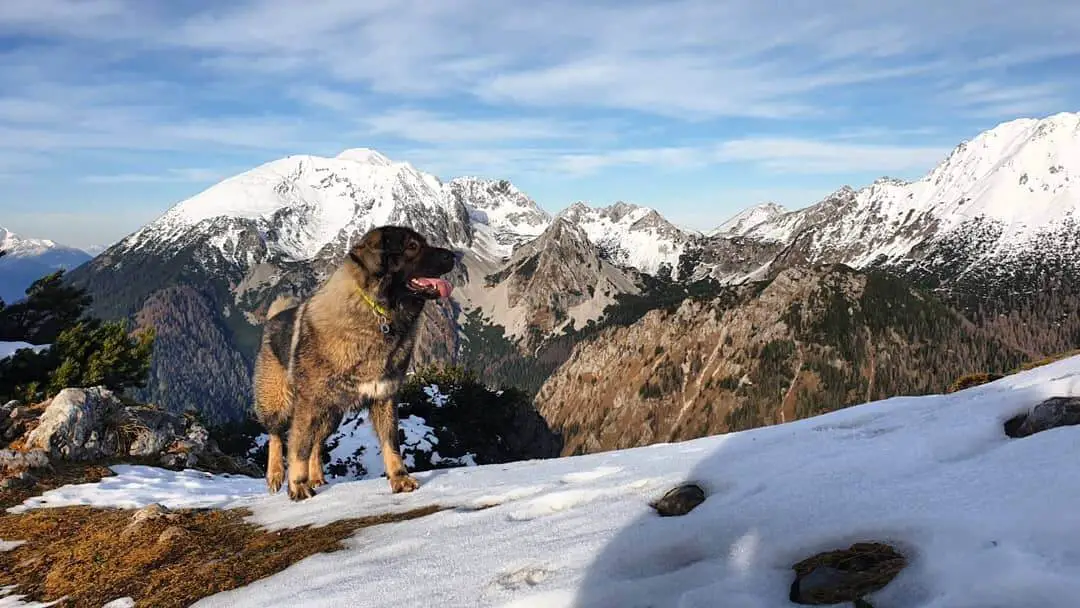
Sharplanina activity levels
These dogs are medium active and don’t require much in order to be happy. Again, working dogs are most likely to satisfy their daily activity levels on their own but if you have a Sharplanina pet you should provide them with enough playing time every day. Two half-hour walks will be more than enough to keep your dog healthy and happy.
Health problems
Every breed in the world is prone to developing some health problems. This doesn’t mean your dog will develop them and controlled breeding made sure that hereditary diseases are nearly bred out of this breed, but still, every new Sharplanina owner should be aware of these potential health problems. Discovering them early might give you a head start for treatment and medication. Some of these conditions include musculoskeletal problems that are related to their size like hip or elbow dysplasia, also gastric torsion and bloat. These dogs are generally healthy and have an average lifespan of 11-13 years which is quite long for such a large dog breed.
Sharplanina breeders
Before you search for Sharplanina breeders, make sure you have made a good decision about getting this dog breed. They are large and strong-willed with a very strong protective temperament. Make sure you research and learn as much as you can about this breed before you decide to get one so you can be sure that you and your new dog will be a great fit.
When searching for breeders, make sure you find a respectable, reputable, and most of all, registered breeder. Registered breeders will have no problem in showing you their breeding licenses and they should gladly answer all of your questions about this breed.
World Dog Finder team

Updated at08.06.2020.

Share